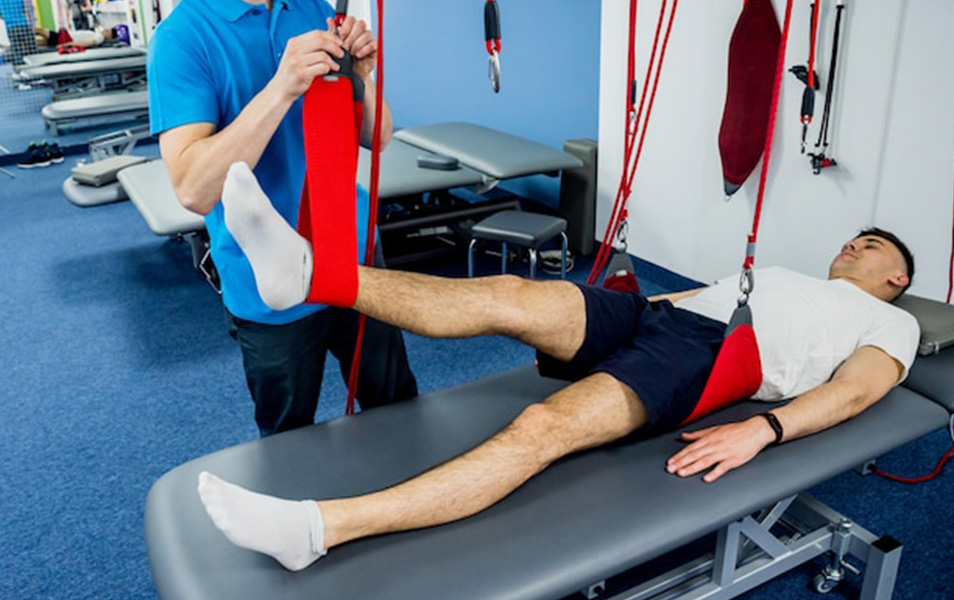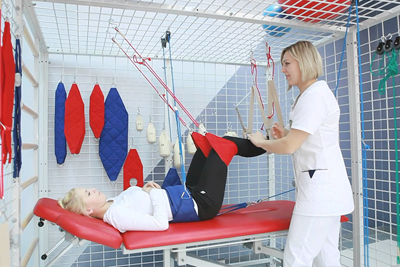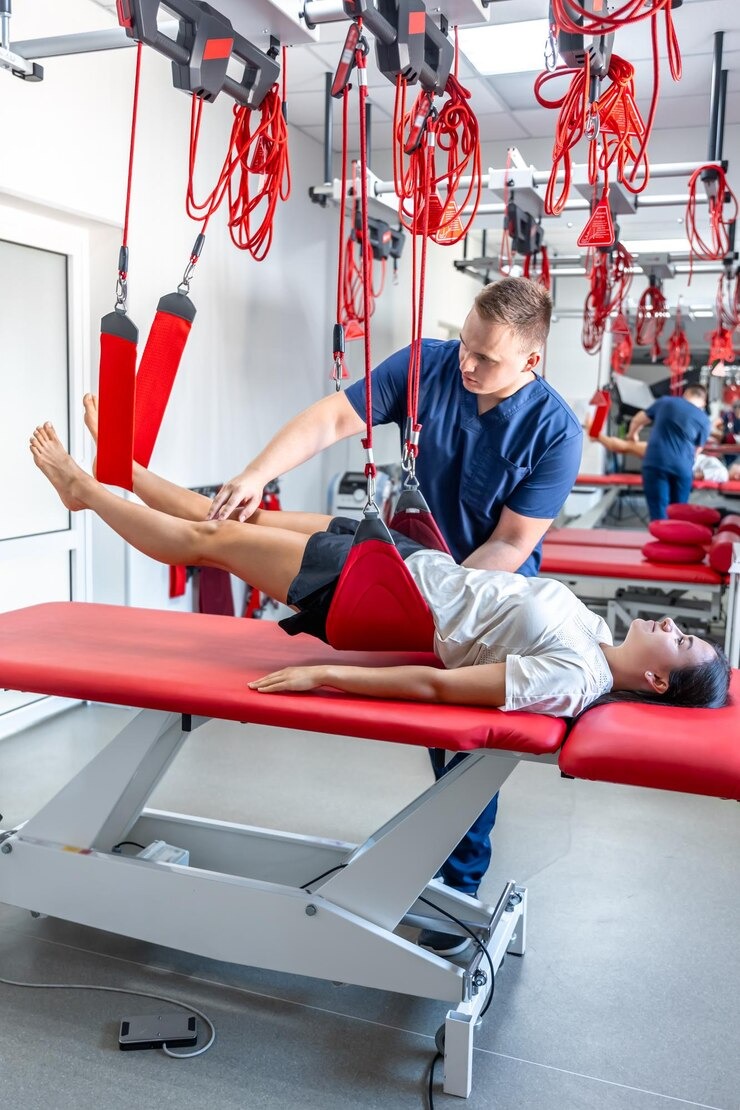What Suspension Therapy Offers

How Suspension Therapy Works
During Suspension Therapy, the patient is secured in a harness that is attached to an overhead suspension system. The system allows patients to move freely while minimizing the weight-bearing load on their joints. This approach helps patients perform functional exercises such as walking, squatting, or stretching without the usual strain on the body. Key elements of Suspension Therapy include:
- Bodyweight Support: The system helps reduce the strain on injured or weak areas by offloading part of the body’s weight.
- Improved Stability and Balance: Helps patients engage their core muscles to improve balance, posture, and coordination.
- Progressive Resistance: The intensity of exercises can be adjusted as patients gain strength and mobility, offering a scalable approach to rehabilitation.
Conditions Treated with Suspension Therapy
Suspension Therapy is ideal for patients recovering from a range of conditions, including:
Post-Surgical Recovery:
Assists in rehabilitation after joint surgeries, including hip, knee, or spinal surgeries.
Neurological Disorders:
Ideal for individuals recovering from stroke, spinal cord injury, or neurological conditions that affect mobility and coordination.
Chronic Pain:
Provides pain relief for individuals with conditions such as arthritis or fibromyalgia by offloading body weight during exercises.
Sports Injuries:
Helps athletes recover from sports-related injuries by strengthening muscles and improving mobility.
Balance and Coordination Issues:
Great for individuals with balance disorders or mobility issues, including elderly patients who need help with fall prevention.



Benefits of Suspension Therapy
Enhanced Mobility and Flexibility:
Suspension therapy allows for improved joint range of motion and flexibility without the risk of overexertion or strain.
Strength Building:
Targeted exercises help strengthen weak muscles, particularly in patients recovering from surgery or injury.
Injury Prevention:
By improving balance and coordination, suspension therapy helps reduce the risk of falls and further injuries.
Pain Reduction:
The reduced weight-bearing load helps alleviate pain and discomfort during movement exercises, particularly for patients with joint or back pain.
Safe Environment for Recovery:
The harness ensures that patients are safe during exercises, preventing falls and promoting a sense of confidence while working on rehabilitation goals.
Neurological Rehabilitation:
Particularly effective for neurological conditions such as stroke, multiple sclerosis, or spinal cord injuries, where muscle weakness and coordination issues are common.
